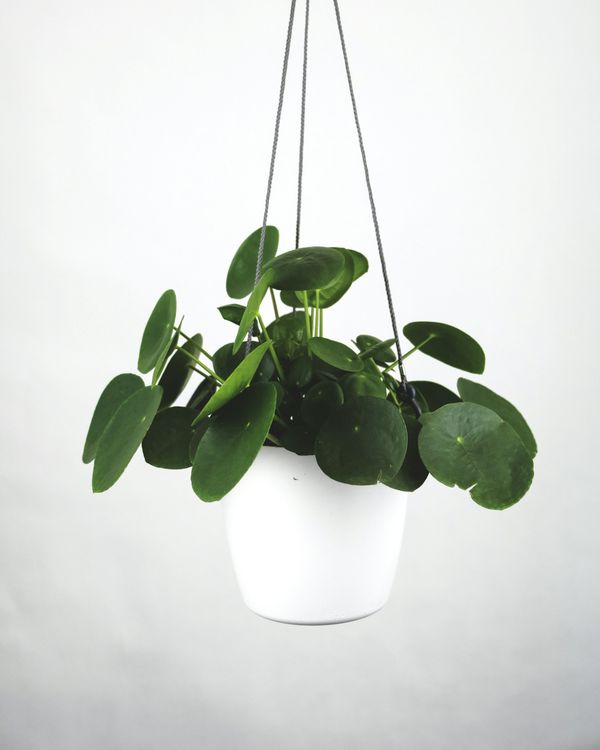Chinese Money Plant Care Guide
How to grow and care for Chinese Money Plant (Pilea peperomioides)
The Pilea peperomioides, commonly known as the Chinese Money Plant, is a popular houseplant cherished for its unique round, coin-shaped leaves. This easy-to-grow plant hails from the southwestern Yunnan province of China, where it grows naturally on rocky outcrops. Renowned for its minimal care requirements and quirky appearance, the Pilea peperomioides is an excellent choice for both novice and experienced plant enthusiasts.

Disclosure: This content includes affiliate links, which means we may earn a commission if you click on a link and make a purchase. As an Amazon Associate, we earn from qualifying purchases. This comes at no extra cost to you and helps offset the cost of running Leafwise. Please read our disclaimer for more info.
Table of Contents
Care
Light
Peperomia plants thrive in bright, indirect light, which is essential for maintaining compact and healthy growth. While they can adapt to moderate light, prolonged exposure to low light may result in leggy stems and reduced vigor. For optimal growth, place the plant near an east- or north-facing window and avoid direct sunlight, as it can scorch the leaves.
Watering
Allow the top two inches of soil to dry out between waterings to prevent overwatering, which can lead to root rot. Peperomia plants store moisture in their leaves, making them more tolerant of occasional drought than excess moisture. During the growing season, maintain consistent watering, but reduce the frequency in winter when growth naturally slows.
Temperature & Humidity
Peperomia thrives in temperatures between 60°F and 75°F (15°C to 24°C). Avoid exposing the plant to temperatures below 50°F (10°C) or subjecting it to cold drafts, as this can cause stress. While Peperomia can tolerate average indoor humidity, maintaining moderate humidity, especially during dry seasons, promotes healthier growth. Consider using a humidifier or a pebble tray to boost moisture levels when needed.
Soil
Use a well-draining potting mix to prevent water retention and root issues. A mix of peat moss and perlite or coarse sand ensures optimal drainage and aeration, keeping the roots healthy and free of rot.
Fertilization
Feed your Peperomia once a month during the active growing season (spring and summer) using a balanced liquid fertilizer diluted to half strength. Avoid over-fertilization, as it can lead to salt buildup. Stop fertilizing in fall and winter when growth naturally slows.
Maintenance
Pruning
Trim any dead or yellowing leaves to promote new growth and maintain a neat appearance. Prune leggy stems to encourage bushier growth and to shape the plant as desired.
Repotting
Repot every 2-3 years or when the plant becomes root-bound. Peperomia prefers a slightly snug pot, so choose a container only slightly larger than the current one with adequate drainage. Fresh soil during repotting helps replenish nutrients.
Propagation
Peperomia plants are easy to propagate through leaf cuttings or division.
Propagating Through Pups (Offsets)
- Identify Offsets: Look for small “pups” or offsets that develop around the base of the plant.
- Remove Gently: Carefully separate the pups from the mother plant, ensuring each offset has its own root system.
- Replant: Place the offsets in small pots filled with well-draining potting mix.
- Water Lightly: Water thoroughly but sparingly to avoid overwatering, allowing the soil to dry slightly between waterings.
Propagating Through Stem Cuttings
- Select a Cutting: Choose a healthy stem with a few leaves attached.
- Make the Cut: Use sharp, sterilized scissors to cut just below a node.
- Dry and Root: Allow the cutting to callous over for a few hours, then place it in water or moist soil. If rooting in water, change the water regularly to prevent stagnation.
- Transplant: Once roots develop (typically within a few weeks), plant the cutting in fresh potting mix.
Common Issues
Yellowing Leaves
Problem: Overwatering or poor drainage.
- Solution: Let the soil dry out before watering again, and ensure the pot has adequate drainage to prevent waterlogging.
Pests
Common Pests: Peperomia plants can occasionally attract spider mites, aphids, and mealybugs, particularly in dry indoor environments or when the plant is stressed.
- Solution: Inspect the plant regularly, and treat infestations promptly with insecticidal soap or neem oil.
Leaf Drop
Problem: Sudden environmental changes or inconsistent watering.
- Solution: Maintain consistent care, and gradually adjust the plant’s environment when needed to avoid sudden stress.
Leggy Growth
Problem: Insufficient light.
- Solution: Move the plant to a location with brighter, indirect light or supplement with grow lights to encourage more compact growth.
By following these tips, your Peperomia will thrive, providing vibrant greenery and charm to your indoor space with minimal effort.
